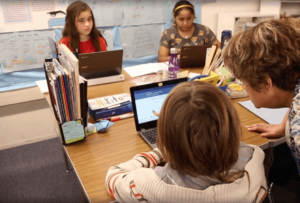How EdTech is Meeting Special Needs

At their summer meeting, Florida special education directors identified a dozen blended learning components they are excited about:
1. Blending learning and flipped classrooms personalize learning for all learners;
2. Video conferencing including Skype and PresenceLearning speech therapy;
3. Delivery webinars from state agencies and vendors;
4. Assistive technology including text to voice, dictation, magnification; and augmentative and alternative communication (ACC) technology help students express themselves;
5. Bring your own device (BYOD) is now the norm–and that benefits some special needs students who now feel at home bringing assistive tech to class;
6. Reduced discipline with higher engagement learning experiences;
7. Improved accessibility for all students;
8. Universal Design for Learning (UDL) reduces barriers, as well as optimize levels of challenge and support, to meet the needs of all learners;
9. Collaboration worldwide for teachers including special needs professional learning communities including Quality Indicators for Assistive Technology (QIAT);
10. Inclusion and integration of special education and general education;
11. Expanding the learning community for students and teachers; and
12. Productivity and accessibility from Google Apps and Dropbox.
The attendees expressed concerns about:
1. District and union support for blending environments;
2. Challenges of BYOD and creating a culture of acceptable use; and
3. Social media could be a time suck with limited benefit and some risk.
As recently noted, New Tools and Schools are Transforming Special Education. The customized learning revolution is clearly benefiting high achievers, but the biggest impact may be in the learning opportunities created for student with special needs. It is finally becoming possible to finetune learning experiences, build resilience and self-reliance, and power effective communication.
PresenceLearning is a Getting Smart Advocacy Partner.






0 Comments
Leave a Comment
Your email address will not be published. All fields are required.